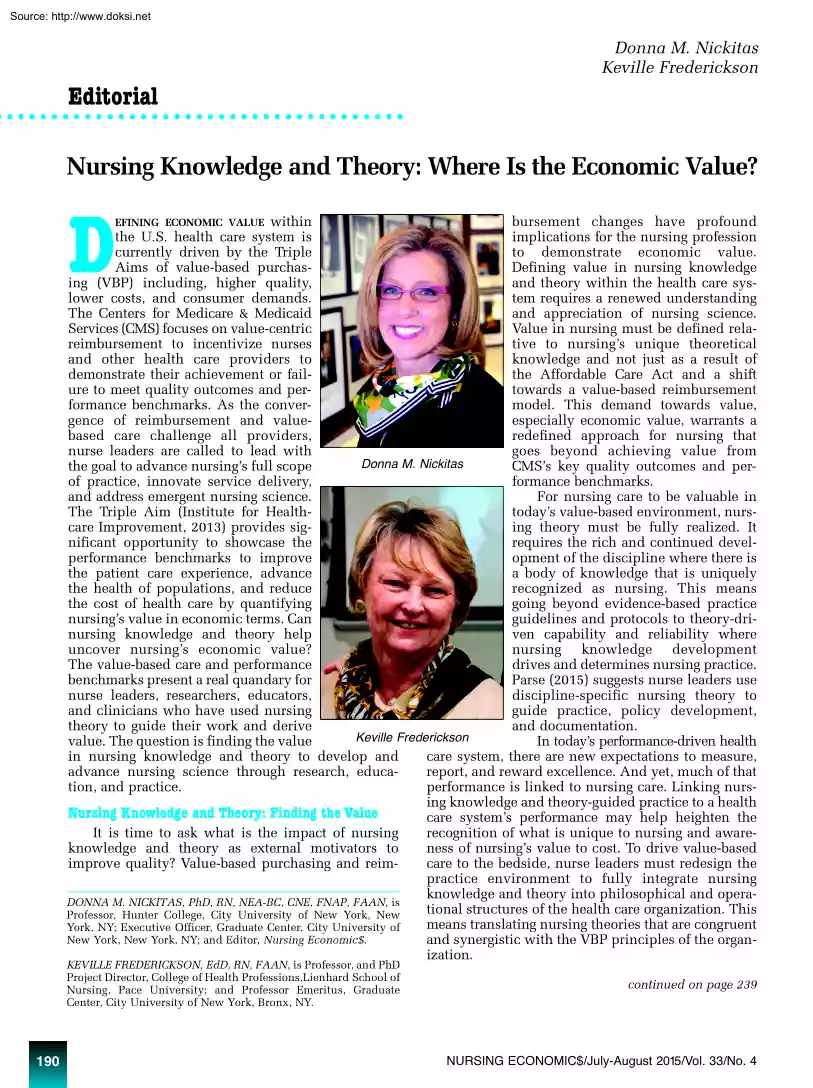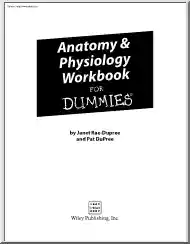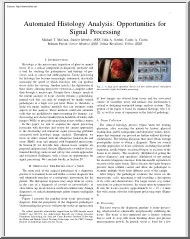Please log in to read this in our online viewer!

Please log in to read this in our online viewer!
No comments yet. You can be the first!
What did others read after this?
Content extract
Source: http://www.doksinet Donna M. Nickitas Keville Frederickson Editorial Nursing Knowledge and Theory: Where Is the Economic Value? EFINING ECONOMIC VALUE within bursement changes have profound the U.S health care system is implications for the nursing profession currently driven by the Triple to demonstrate economic value. Aims of value-based purchasDefining value in nursing knowledge ing (VBP) including, higher quality, and theory within the health care syslower costs, and consumer demands. tem requires a renewed understanding The Centers for Medicare & Medicaid and appreciation of nursing science. Services (CMS) focuses on value-centric Value in nursing must be defined relareimbursement to incentivize nurses tive to nursing’s unique theoretical and other health care providers to knowledge and not just as a result of demonstrate their achievement or failthe Affordable Care Act and a shift ure to meet quality outcomes and pertowards a value-based reimbursement formance
benchmarks. As the convermodel This demand towards value, gence of reimbursement and valueespecially economic value, warrants a based care challenge all providers, redefined approach for nursing that nurse leaders are called to lead with goes beyond achieving value from Donna M. Nickitas the goal to advance nursing’s full scope CMS’s key quality outcomes and perof practice, innovate service delivery, formance benchmarks. and address emergent nursing science. For nursing care to be valuable in The Triple Aim (Institute for Healthtoday’s value-based environment, nurscare Improvement, 2013) provides siging theory must be fully realized. It nificant opportunity to showcase the requires the rich and continued develperformance benchmarks to improve opment of the discipline where there is the patient care experience, advance a body of knowledge that is uniquely the health of populations, and reduce recognized as nursing. This means the cost of health care by quantifying going beyond
evidence-based practice nursing’s value in economic terms. Can guidelines and protocols to theory-drinursing knowledge and theory help ven capability and reliability where uncover nursing’s economic value? nursing knowledge development The value-based care and performance drives and determines nursing practice. benchmarks present a real quandary for Parse (2015) suggests nurse leaders use nurse leaders, researchers, educators, discipline-specific nursing theory to and clinicians who have used nursing guide practice, policy development, theory to guide their work and derive and documentation. Keville Frederickson value. The question is finding the value In today’s performance-driven health in nursing knowledge and theory to develop and care system, there are new expectations to measure, advance nursing science through research, educareport, and reward excellence. And yet, much of that tion, and practice. performance is linked to nursing care. Linking nursing knowledge and
theory-guided practice to a health Nursing Knowledge and Theory: Finding the Value care system’s performance may help heighten the recognition of what is unique to nursing and awareIt is time to ask what is the impact of nursing ness of nursing’s value to cost. To drive value-based knowledge and theory as external motivators to care to the bedside, nurse leaders must redesign the improve quality? Value-based purchasing and reimpractice environment to fully integrate nursing knowledge and theory into philosophical and operaDONNA M. NICKITAS, PhD, RN, NEA-BC, CNE, FNAP, FAAN, is tional structures of the health care organization. This Professor, Hunter College, City University of New York, New means translating nursing theories that are congruent York, NY; Executive Officer, Graduate Center, City University of New York, New York, NY; and Editor, Nursing Economic$. and synergistic with the VBP principles of the organization. D KEVILLE FREDERICKSON, EdD, RN, FAAN, is Professor, and
PhD Project Director, College of Health Professions,Lienhard School of Nursing, Pace University; and Professor Emeritus, Graduate Center, City University of New York, Bronx, NY. 190 continued on page 239 NURSING ECONOMIC$/July-August 2015/Vol. 33/No 4 Source: http://www.doksinet Editorial continued from page 190 Historically, when the National League of Nursing required the use of a conceptual model as the basis for a curriculum, nursing models flourished. Specifically, there was an emphasis on Orem, as concept of self-care was appealing not only to educators but to clinicians as did Roy and the Roy Adaptation Model. Rogers and Parse were also popular as they focused on nursing, environment, relationships, and true presence. However, few studies focused on the economic value of implementing a nursing model. As a wise nurse researcher colleague once said, “those activities that nurses hold dear won’t cut it in the long term. Demonstrating the economic value is the commodity
that nurse leaders and administrators value.” One historical example is the position of the clinical nurse specialist (CNS). In the 70s, the CNS was viewed as an innovative model that would improve patient care through advanced practice expertise and consultation. Once the budgetary constraints within hospitals became a reality during the 1990s, the CNS role was one of the first to either be aged or “absorbed” into a supervisory position. What happened? Little if any research was conducted and published to demonstrate the economic value of the CNS. It did appear the CNS was able to provide consultation to reduce length of stay, increase patient satisfaction, and decrease nurse-sensitive complications. However, hospital executives are not impressed with appearances They are interested in results and hard data. The same can be said about the use of nursing models and frameworks applied as the basis for NURSING ECONOMIC$/July-August 2015/Vol. 33/No 4 today’s nursing practice. In
a thorough search in CINAHL, there were two references to the economic value of a nursing model used as the basis for practice. Frederickson (1990), in a study of the economic efficacy of the implementation of a nursing model, found a $300,000 savings over the 1-year of initial implementation on a specialty unit. The year before the initiation of the project, 10 of the 38 nurses left the unit. It was calculated that the loss of each nurse cost the hospital $30,000 which included hiring per diem nurses, advertising, orientation, and back fill until the new nurse was ready to work independently. The experimental nursing model based unit demonstrated increases in patient, family, and nurse satisfaction (Frederickson & Williams, 1997). Using the Triple Aims of VBP may not uncover all the economic value in nursing. However, using discipline-specific nursing theory with VBP may provide the necessary body of knowledge that fully recognizes nursing’s real value – only performance
benchmarks and quality measures will tell. $ REFERENCES Frederickson, K., & Williams, J (1997) Nursing theory-guided practice Nursing Science Quarterly, 10(1), 53-58 Frederickson, K. (1990) Nursing theories – A basis for differentiated practice: Application of the Roy Adaptation Model in nursing practice in differentiating nursing practice into the twenty-first century Washington, DC: American Academy of Nursing. Institute for Healthcare Improvement. (2013) Triple aim initiative Retrieved from http://www.ihiorg/Engage/Initiatives/Triple Aim/Pages/default.aspx Parse, R. (2015) Nursing: A basic or applied science Nursing Science Quarterly, 28(7), 181-182. doi:101177/08943184155 85636 239
benchmarks. As the convermodel This demand towards value, gence of reimbursement and valueespecially economic value, warrants a based care challenge all providers, redefined approach for nursing that nurse leaders are called to lead with goes beyond achieving value from Donna M. Nickitas the goal to advance nursing’s full scope CMS’s key quality outcomes and perof practice, innovate service delivery, formance benchmarks. and address emergent nursing science. For nursing care to be valuable in The Triple Aim (Institute for Healthtoday’s value-based environment, nurscare Improvement, 2013) provides siging theory must be fully realized. It nificant opportunity to showcase the requires the rich and continued develperformance benchmarks to improve opment of the discipline where there is the patient care experience, advance a body of knowledge that is uniquely the health of populations, and reduce recognized as nursing. This means the cost of health care by quantifying going beyond
evidence-based practice nursing’s value in economic terms. Can guidelines and protocols to theory-drinursing knowledge and theory help ven capability and reliability where uncover nursing’s economic value? nursing knowledge development The value-based care and performance drives and determines nursing practice. benchmarks present a real quandary for Parse (2015) suggests nurse leaders use nurse leaders, researchers, educators, discipline-specific nursing theory to and clinicians who have used nursing guide practice, policy development, theory to guide their work and derive and documentation. Keville Frederickson value. The question is finding the value In today’s performance-driven health in nursing knowledge and theory to develop and care system, there are new expectations to measure, advance nursing science through research, educareport, and reward excellence. And yet, much of that tion, and practice. performance is linked to nursing care. Linking nursing knowledge and
theory-guided practice to a health Nursing Knowledge and Theory: Finding the Value care system’s performance may help heighten the recognition of what is unique to nursing and awareIt is time to ask what is the impact of nursing ness of nursing’s value to cost. To drive value-based knowledge and theory as external motivators to care to the bedside, nurse leaders must redesign the improve quality? Value-based purchasing and reimpractice environment to fully integrate nursing knowledge and theory into philosophical and operaDONNA M. NICKITAS, PhD, RN, NEA-BC, CNE, FNAP, FAAN, is tional structures of the health care organization. This Professor, Hunter College, City University of New York, New means translating nursing theories that are congruent York, NY; Executive Officer, Graduate Center, City University of New York, New York, NY; and Editor, Nursing Economic$. and synergistic with the VBP principles of the organization. D KEVILLE FREDERICKSON, EdD, RN, FAAN, is Professor, and
PhD Project Director, College of Health Professions,Lienhard School of Nursing, Pace University; and Professor Emeritus, Graduate Center, City University of New York, Bronx, NY. 190 continued on page 239 NURSING ECONOMIC$/July-August 2015/Vol. 33/No 4 Source: http://www.doksinet Editorial continued from page 190 Historically, when the National League of Nursing required the use of a conceptual model as the basis for a curriculum, nursing models flourished. Specifically, there was an emphasis on Orem, as concept of self-care was appealing not only to educators but to clinicians as did Roy and the Roy Adaptation Model. Rogers and Parse were also popular as they focused on nursing, environment, relationships, and true presence. However, few studies focused on the economic value of implementing a nursing model. As a wise nurse researcher colleague once said, “those activities that nurses hold dear won’t cut it in the long term. Demonstrating the economic value is the commodity
that nurse leaders and administrators value.” One historical example is the position of the clinical nurse specialist (CNS). In the 70s, the CNS was viewed as an innovative model that would improve patient care through advanced practice expertise and consultation. Once the budgetary constraints within hospitals became a reality during the 1990s, the CNS role was one of the first to either be aged or “absorbed” into a supervisory position. What happened? Little if any research was conducted and published to demonstrate the economic value of the CNS. It did appear the CNS was able to provide consultation to reduce length of stay, increase patient satisfaction, and decrease nurse-sensitive complications. However, hospital executives are not impressed with appearances They are interested in results and hard data. The same can be said about the use of nursing models and frameworks applied as the basis for NURSING ECONOMIC$/July-August 2015/Vol. 33/No 4 today’s nursing practice. In
a thorough search in CINAHL, there were two references to the economic value of a nursing model used as the basis for practice. Frederickson (1990), in a study of the economic efficacy of the implementation of a nursing model, found a $300,000 savings over the 1-year of initial implementation on a specialty unit. The year before the initiation of the project, 10 of the 38 nurses left the unit. It was calculated that the loss of each nurse cost the hospital $30,000 which included hiring per diem nurses, advertising, orientation, and back fill until the new nurse was ready to work independently. The experimental nursing model based unit demonstrated increases in patient, family, and nurse satisfaction (Frederickson & Williams, 1997). Using the Triple Aims of VBP may not uncover all the economic value in nursing. However, using discipline-specific nursing theory with VBP may provide the necessary body of knowledge that fully recognizes nursing’s real value – only performance
benchmarks and quality measures will tell. $ REFERENCES Frederickson, K., & Williams, J (1997) Nursing theory-guided practice Nursing Science Quarterly, 10(1), 53-58 Frederickson, K. (1990) Nursing theories – A basis for differentiated practice: Application of the Roy Adaptation Model in nursing practice in differentiating nursing practice into the twenty-first century Washington, DC: American Academy of Nursing. Institute for Healthcare Improvement. (2013) Triple aim initiative Retrieved from http://www.ihiorg/Engage/Initiatives/Triple Aim/Pages/default.aspx Parse, R. (2015) Nursing: A basic or applied science Nursing Science Quarterly, 28(7), 181-182. doi:101177/08943184155 85636 239




 When reading, most of us just let a story wash over us, getting lost in the world of the book rather than paying attention to the individual elements of the plot or writing. However, in English class, our teachers ask us to look at the mechanics of the writing.
When reading, most of us just let a story wash over us, getting lost in the world of the book rather than paying attention to the individual elements of the plot or writing. However, in English class, our teachers ask us to look at the mechanics of the writing.